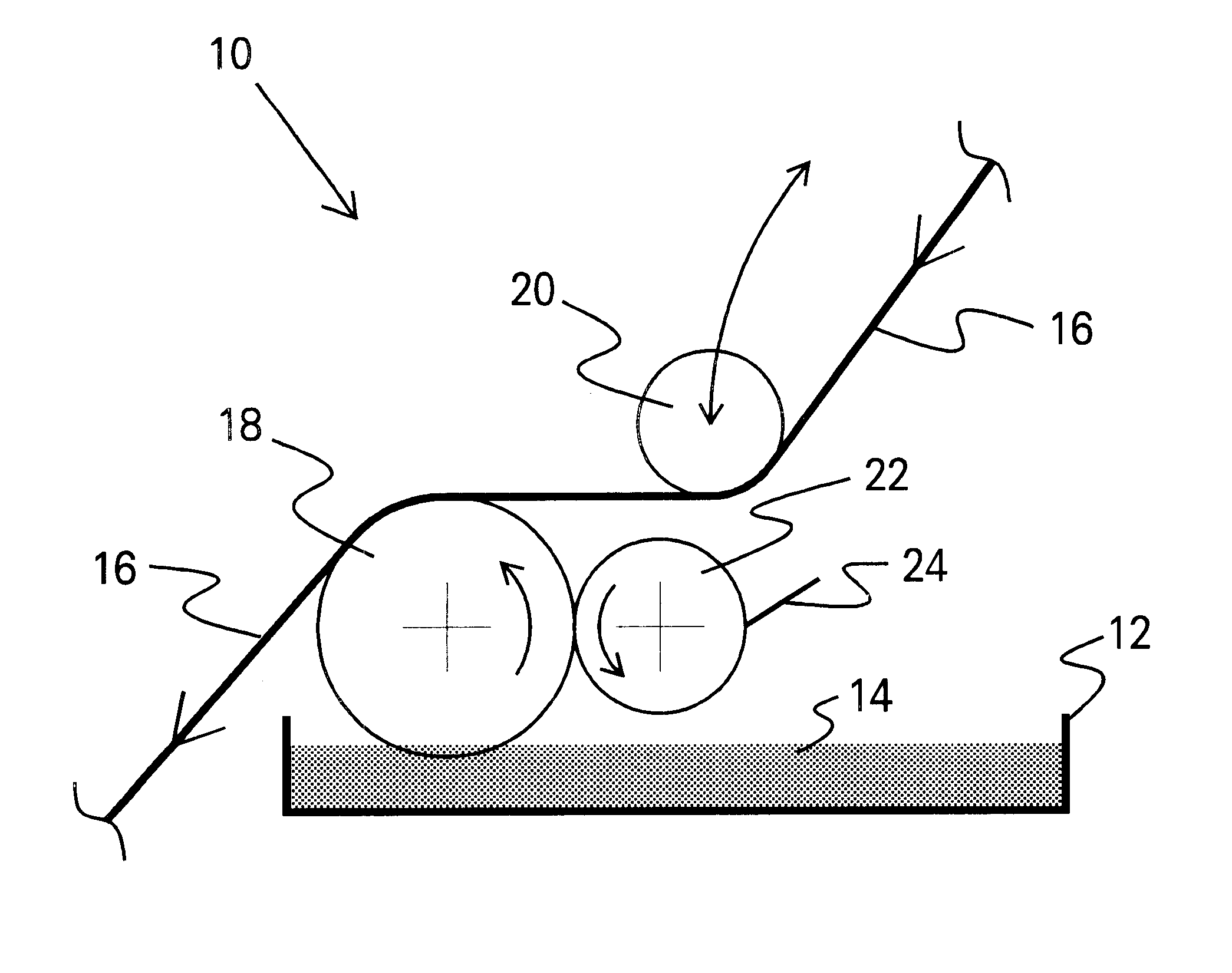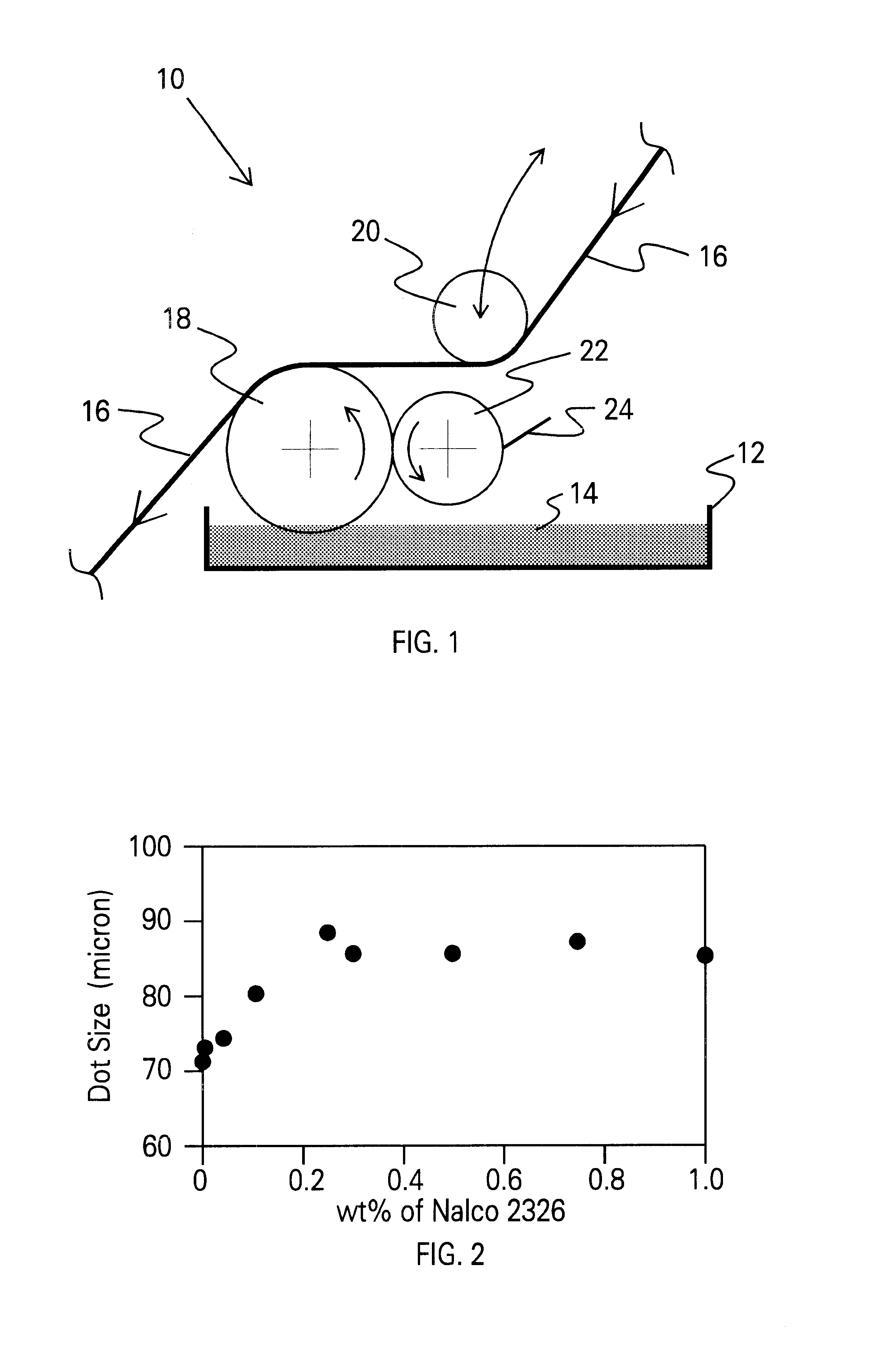Increasing dot size on porous media printed with pigmented inks
a technology of pigmented inks and porous media, which is applied in the field of increasing the dot size of porous media printed with pigmented inks, can solve the problems of short dry time, long dry time, and saturated printed surface with vehicl
- Summary
- Abstract
- Description
- Claims
- Application Information
AI Technical Summary
Benefits of technology
Problems solved by technology
Method used
Image
Examples
example 1
A base coat and a subsequent top coat were coated onto a glossy print medium. The base coat and top coat had the composition listed in Table I below. Prior to coating the top coat, a first rewet solution, comprising heated water, was coated onto the base coat and excess was removed before applying the top coat.
Following application of the top coat, then a coating of the second rewet solution was applied to the top coat, in accordance with the present invention. The compositions tested are listed in Tables II and III, below.
TABLE II
Coated media, after drying of the second rewet solution, were printed with Hewlett-Packard ultraviolet (UV) pigment-based inks on an H-P DesignJet 2500CP printer.
The measurements of the dot size of the printed ink are shown in FIGS. 3a-3b (for compositions listed in Table II) and in FIGS. 4a-4b (for compositions listed in Table III) for a rewet liquid containing a polymer and a colloidal dispersion, respectively. All samples showed similar image quality (I...
example 2
Coating defects (e.g., fisheyes) may occur during the rewet process due to the high surface tension of the dilute pigment dispersion. Various surface tension reducing agents, such as iso-propanol (IPA), 1-butanol (BuOH), polyvinyl alcohol-polyvinyl acetate (e.g., Airvol 523), Surfynol (from Air Products), and Dynol (from Air Products) can be incorporated in the wash coat to achieve better wetting and uniformity. Examples and results are summarized in Table V.
The addition of the surface tension reducing agent provides a smoother coating of the rewet solution, without adversely affecting the dot size and the media gloss.
example 3
A cross-linking agent that is known to cross link the top coat or the base coat can be added to the wash coat for adhesion or durability enhancement of the coating. Examples of such cross-linking agents include glyoxal and Tyzor (available from du Pont). The results are summarized in Table VI.
The addition of the cross-linking agent served to strengthen the top coat and the base coat, without adversely affecting the dot size and media gloss advantages provided by the second rewet solution of the present invention.
PUM
| Property | Measurement | Unit |
|---|---|---|
| particle sizes | aaaaa | aaaaa |
| wt % | aaaaa | aaaaa |
| particle size D | aaaaa | aaaaa |
Abstract
Description
Claims
Application Information
 Login to View More
Login to View More - R&D
- Intellectual Property
- Life Sciences
- Materials
- Tech Scout
- Unparalleled Data Quality
- Higher Quality Content
- 60% Fewer Hallucinations
Browse by: Latest US Patents, China's latest patents, Technical Efficacy Thesaurus, Application Domain, Technology Topic, Popular Technical Reports.
© 2025 PatSnap. All rights reserved.Legal|Privacy policy|Modern Slavery Act Transparency Statement|Sitemap|About US| Contact US: help@patsnap.com



